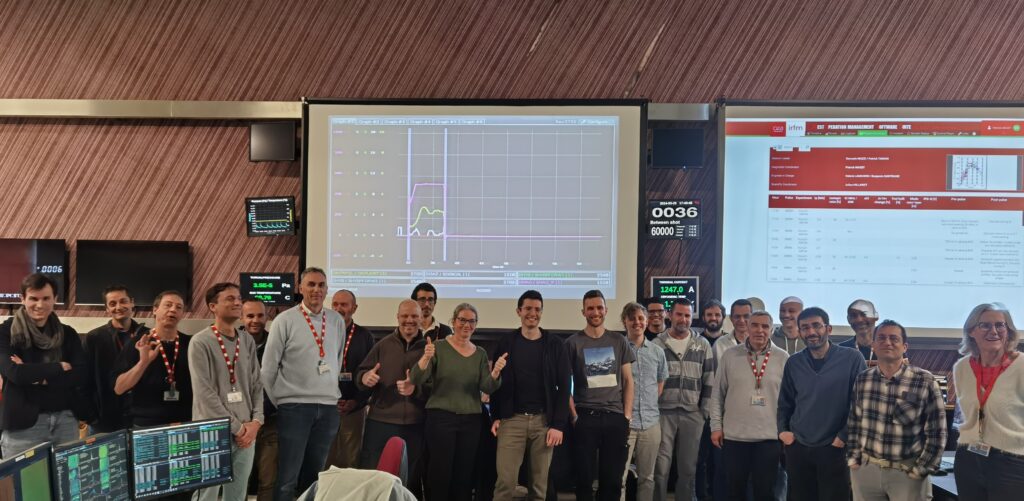
Photo: CEA – IRFM
WEST is unique among European tokamaks thanks to its superconducting magnets, which allow for long fusion experiments. Phase 1 of WEST operation was limited to shots of tens of seconds because the lower divertor, where the hot plasma directly touches the wall of the machine, was not actively cooled. That means that the shots are limited to the time it takes for the divertor to heat up (called inertial cooling), with shot durations around tens of seconds.
In September 2021, the WEST lower divertor was fully equipped with actively cooled components, with the same technology as the ITER divertor (tungsten monoblocks) paving the way for true exploration of long-discharge operation. The following experimental campaign produced nearly 5 hours 30 minutes of cumulated plasma time, out of which 3 hours were dedicated to a campaign to reach the particle fluence similar to an ITER shot in order to assess the behaviour of the ITER-grade divertor components under long plasma exposure.
Recently, a plasma shot of 6 minutes 4 seconds made it possible to surpass the record of WEST’s previous incarnation (Tore Supra) with respect to injected and extracted energy into plasma (1.15 GJ against 1 GJ). The exploration of long pulse duration continues on WEST to reach the milestone of 1000 seconds.
The WEST facility, for “W (tungsten) Environment in Steady state Tokamak”, is an all-tungsten machine with long-pulse plasma capacity, which is already providing numerous results in preparation for ITER. The WEST device is now fully mature and promises to deliver exciting research opportunities to the fusion programme run by the IRFM teams and all WEST collaborators.
WEST contributes to the European Research Roadmap to the Realisation of Fusion Energy as part of the EUROfusion work package on tokamak exploitation.

